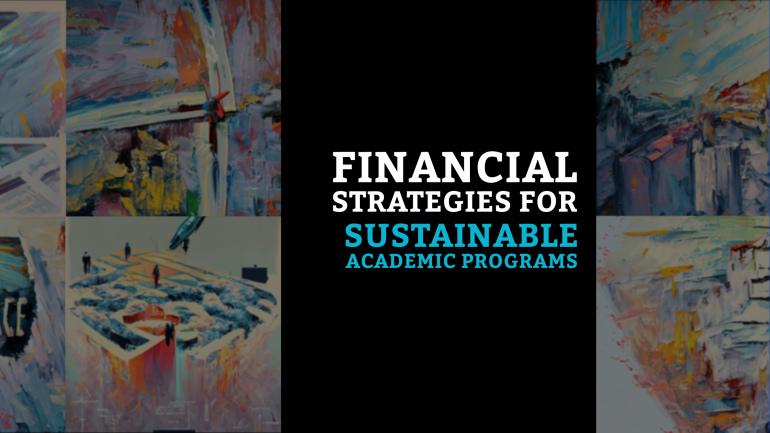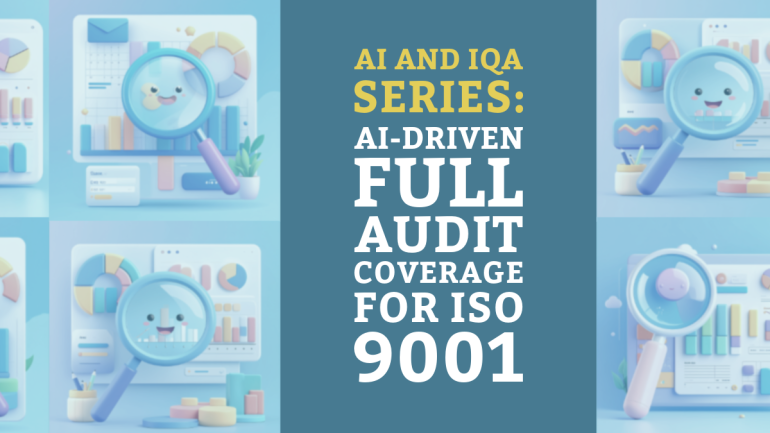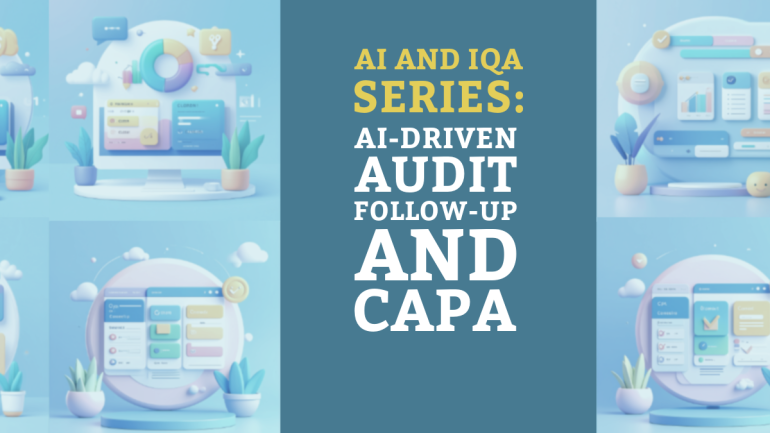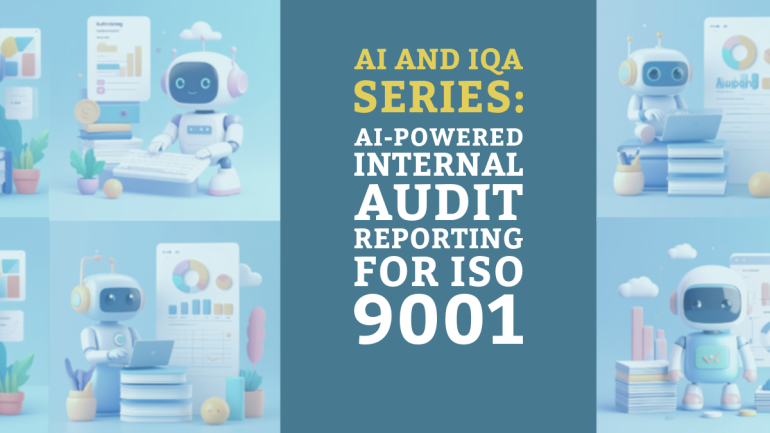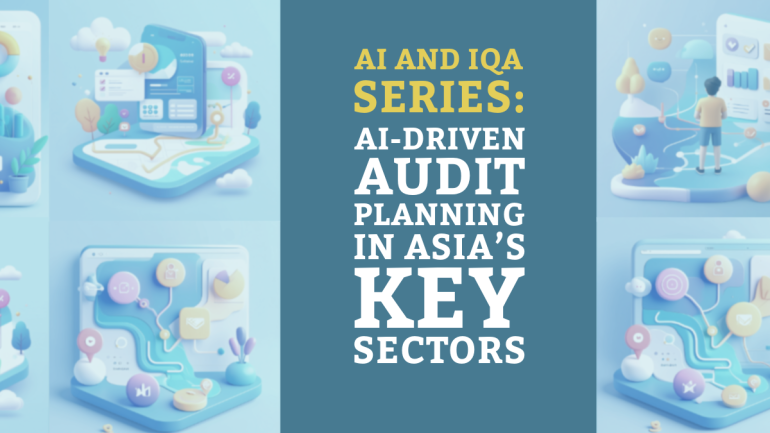Table of Contents
TL;DR: Implementing Financial Strategies for Academic Program Sustainability
- Align financial strategies with program mission: Ensure that financial decisions support the long-term goals and sustainability of academic programs.
- Diversify revenue streams: Explore various sources of funding such as grants, donations, partnerships, and alternative revenue models to reduce dependence on a single source.
- Implement cost-saving measures: Identify areas where costs can be reduced without compromising the quality of education, such as energy efficiency initiatives or shared services.
- Monitor and evaluate financial performance: Regularly assess the financial health of the program through key performance indicators and adjust strategies as needed to address any challenges.
- Engage stakeholders: Involve faculty, students, staff, alumni, and community partners in discussions about financial sustainability to garner support and input for decision-making.
You may be overseeing an academic program and wondering how to ensure its longevity and success. Financial strategies play a crucial role in sustaining academic programs, but the challenges can be complex and daunting. By implementing effective financial strategies, you can secure the future of your program and provide quality education to students for years to come.
Fundamentals of Academic Program Finance
Revenue Streams for Academic Institutions
Finance is a critical aspect of sustaining academic programs. Academic institutions rely on several revenue streams to support their operations. These streams include tuition fees, government funding, grants, donations, and revenue from partnerships with industry and other organizations. Diversifying revenue sources is imperative to reduce dependency on any single source and mitigate financial risks.
Cost Structures and Budgeting
To ensure the sustainability of academic programs, it is crucial to understand the cost structures and implement effective budgeting practices. Cost structures typically include faculty salaries, administrative expenses, facilities maintenance, technology investments, and student support services. Developing a detailed budget that aligns with the institution’s strategic goals is imperative for financial planning and resource allocation.
Institutions must regularly review and analyze their cost structures to identify areas for potential cost savings or reallocation of resources. Implementing cost-effective measures while maintaining the quality of academic programs is key to long-term financial sustainability. Effective budgeting practices also involve monitoring expenses, forecasting revenues, and adjusting financial plans as needed to ensure the efficient use of resources.
Strategic Financial Planning
Even in the world of academia, financial planning is a crucial component of sustaining academic programs over the long term. Without a sound financial strategy in place, academic institutions can struggle to maintain the quality of their programs and support their faculty and students effectively.
Long-Term Vision for Program Sustainability
For an academic program to be sustainable, it is crucial to have a long-term vision that outlines the goals and objectives for the program’s future development. This includes considering factors such as enrollment trends, funding sources, and potential growth opportunities. By establishing a clear vision for sustainability, institutions can proactively address challenges and capitalize on opportunities to maintain the quality and relevance of their academic programs.
Aligning Financial Goals with Academic Missions
With the increasing financial pressures facing academic institutions, it is more important than ever to align financial goals with the core missions of the institution. This involves identifying the key academic priorities and ensuring that financial resources are allocated in a way that supports these priorities. By aligning financial goals with academic missions, institutions can enhance their academic excellence and reputation, ultimately ensuring the long-term sustainability of their programs.
Sustainability in academic programs requires a careful balance between financial stability and academic quality. By strategically planning for the long term and aligning financial goals with academic missions, institutions can position themselves for success and continued impact in the ever-changing landscape of higher education.
Diversifying Income Sources
Now more than ever, universities and colleges need to diversify their income sources to ensure the sustainability of their academic programs. Relying solely on tuition fees and government funding is no longer a viable strategy in today’s unpredictable financial landscape. By exploring alternative funding options and seeking partnerships and collaboration opportunities, academic institutions can increase their financial security and expand their resources.
Exploring Alternative Funding Options
With shrinking budgets and increasing competition for funding, academic institutions must think outside the box to secure additional sources of revenue. This can include seeking grants from foundations, corporations, and government agencies, as well as launching fundraising campaigns targeting alumni and community members. Embracing innovative approaches such as crowdfunding and online giving platforms can also help generate income for academic programs.
Partnerships and Collaboration Opportunities
To foster financial sustainability, academic institutions should actively seek partnerships and collaboration opportunities with businesses, non-profit organizations, and other educational institutions. Collaborative initiatives such as joint research projects, shared facilities, and co-sponsored events can not only bring in additional funding but also enhance the academic experience for students and faculty. By leveraging each other’s strengths and resources, institutions can create mutually beneficial relationships that support their academic programs and promote long-term growth.
Plus, forming partnerships with industry leaders can open up new avenues for funding, research opportunities, and career development for students. These collaborations can also enhance the institution’s reputation and visibility in the academic and professional communities, attracting top talent and expanding networking opportunities for all stakeholders involved.
Cost Management and Efficiency
Once again, in sustainable academic program management, effective cost management plays a critical role. By implementing strategies that focus on cost-saving measures and efficiency, institutions can ensure the long-term viability of their academic programs.
Implementing Cost-saving Measures
Management of costs within academic programs involves a careful analysis of expenditures and the implementation of cost-saving measures. One effective strategy is to streamline administrative processes to reduce overhead costs. This can involve consolidating services, renegotiating contracts with vendors for better rates, and implementing energy-saving initiatives to reduce utility expenses. Additionally, academic institutions can explore collaborative partnerships with other institutions to share resources and reduce costs collectively.
Technology Integration to Reduce Expenses
The integration of technology is pivotal in driving efficiencies and reducing costs within academic programs. By leveraging technology solutions such as online learning platforms, electronic document management systems, and virtual meeting tools, institutions can significantly reduce expenses associated with traditional classroom setups, printing costs, and travel expenses. This not only helps in cost reduction but also enhances the overall learning experience for students and faculty.
Efficiency in cost management and tech integration leads to positive outcomes for academic programs, ensuring financial sustainability in the long run. It is crucial for academic institutions to continually assess their cost structures, identify areas for improvement, and implement efficient solutions to maintain a healthy financial outlook.
Investment in Growth
Smart Capital Expenditure Planning
To ensure sustainable academic programs, it is crucial for educational institutions to make smart investments in growth. Smart capital expenditure planning involves strategically allocating resources to areas that will yield the highest returns and support the long-term viability of the programs. By analyzing current needs, projected growth, and market trends, institutions can make informed decisions about where to invest their capital.
ROI Considerations for New Programs and Expansions
To drive growth and ensure the success of academic programs, institutions must carefully consider the ROI (Return on Investment) of new programs and expansions. This involves evaluating the potential costs and benefits of launching a new program or expanding an existing one. Factors such as enrollment projections, market demand, and competitive landscape must be taken into account to assess the financial viability and long-term impact of the investment.
ROI considerations for new programs and expansions are necessary to avoid overspending on initiatives that may not yield the desired results. Conducting thorough cost-benefit analyses and feasibility studies can help institutions make informed decisions that align with their strategic goals and financial health.
Monitoring and Adjusting Financial Strategies
Despite the careful planning and implementation of financial strategies for sustainable academic programs, continuous monitoring and adjustment are crucial. This chapter probes into the importance of monitoring financial performance and making necessary adjustments to ensure the long-term viability of academic programs.
Key Performance Indicators (KPIs) for Academic Programs
One of the key elements in monitoring the financial health of academic programs is the use of Key Performance Indicators (KPIs). These KPIs help track crucial metrics that reflect the program’s financial performance and sustainability. Common KPIs for academic programs include student enrollment numbers, retention rates, tuition revenue, research funding, and operating costs.
Responding to Financial Performance Data
Responding to financial performance data is vital for making informed decisions about the financial strategies of academic programs. By analyzing KPIs and financial reports, program administrators can identify areas of strength and weakness, allowing them to proactively address financial challenges and seize opportunities for growth. Taking a proactive approach to responding to financial performance data can help ensure the financial sustainability and success of academic programs.
This approach allows program administrators to detect trends early and take corrective actions before financial issues escalate. By staying flexible and adaptable in their financial strategies, programs can navigate uncertain economic environments and changing student demands.
Conclusion
The implementation of financial strategies is crucial for the sustainability of academic programs. By carefully managing resources, such as budgeting, fundraising, and diversifying revenue streams, educational institutions can ensure the long-term viability of their programs. It is crucial for administrators to prioritize financial planning and decision-making to support the academic mission and goals of the institution.
The success of sustainable academic programs relies on strategic financial management and forward-thinking initiatives. With proper allocation of resources and a commitment to financial sustainability, educational institutions can thrive in an ever-changing landscape. By adopting a proactive approach to financial planning, institutions can safeguard the future of their academic programs and continue to provide high-quality education for generations to come.
FAQ
Q: What are financial strategies for sustainable academic programs?
A: Financial strategies for sustainable academic programs are long-term plans that educational institutions implement to manage their resources effectively and ensure the continuity and growth of their academic programs.
Q: Why are financial strategies important for academic programs?
A: Financial strategies are crucial for academic programs to ensure financial stability, invest in program development, attract and retain quality faculty and students, and adapt to changing economic conditions.
Q: What are some common financial strategies for sustainable academic programs?
A: Some common financial strategies include creating diversified revenue streams, implementing cost-saving measures, conducting regular budget reviews, fundraising efforts, and establishing endowments.
Q: How can academic institutions ensure the success of their financial strategies?
A: Academic institutions can ensure the success of their financial strategies by aligning them with their long-term goals, regularly monitoring and evaluating their financial performance, engaging stakeholders in the decision-making process, and fostering a culture of fiscal responsibility.
Q: What are the benefits of implementing effective financial strategies for sustainable academic programs?
A: The benefits of implementing effective financial strategies include financial stability, enhanced program quality, increased competitiveness, better resource allocation, improved reputation, and long-term sustainability of academic programs.
